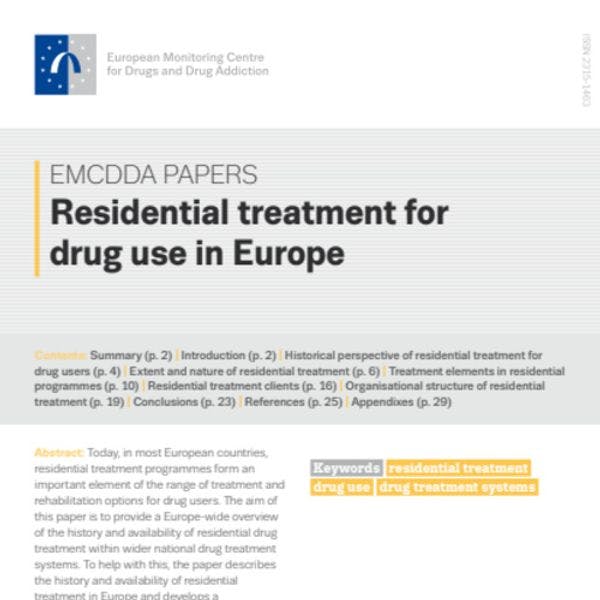Residential treatment for drug use in Europe
‘Residential treatment’ comprises the provision of a range of treatment delivery models or programmes of therapeutic (and other) activities for drug users, within the context of residential accommodation, in either the community or a hospital setting. The main therapeutic approaches used include the 12-step/Minnesota model, therapeutic community and cognitive–behavioural (or other) therapy-based interventions.
Today, in most European countries, residential treatment programmes form an important element of the range of treatment and rehabilitation options for drug users. Countries differ, however, in the level of residential treatment provision.
Latest estimates suggest that, while almost three-quarters of a million problem opioid users are receiving opioid substitution treatment in Europe, at least a quarter of a million drug users are receiving other forms of treatment, including a range of approaches in residential settings.
Most people receiving specialist treatment for drug problems may not need to access residential treatment. Their needs can be met appropriately by community drug treatment services, which have increased in availability and effectiveness over the past decade.However, outpatient treatment and rehabilitation may not always be the most appropriate option, particularly for a select group of drug-dependent clients who need the safety and structure that residential treatment can provide. Hence, residential drug treatment is a sizeable and necessary element in the range of treatment options available to drug users.
While measuring and improving drug treatment provision and outcome in opioid substitution treatment have been high on the research agenda in recent years, the extent and nature of residential treatment has received less research attention.
The aim of this publication is to provide a Europe-wide overview of the history and availability of residential drug treatment within wider national drug treatment systems. To facilitate this, this paper develops a categorisation of the broad range of available models applied in residential settings.
Finally, it describes the characteristics of residential treatment clients, as well as presenting and discussing key features of the organisational issues around this type of treatment.
Keep up-to-date with drug policy developments by subscribing to the IDPC Monthly Alert.
Downloads
Related Profiles
- European Monitoring Centre on Drugs and Drug Addiction (EMCDDA)
